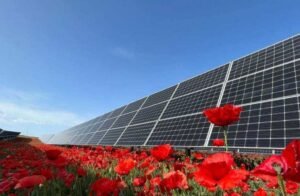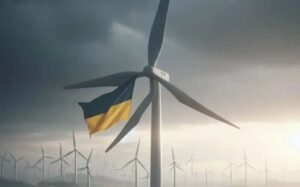Why Ukraine should opt for renewable energy to strengthen itself against Russia

The war with Russia has left Ukraine with a battered energy system and in constant threat of enemy attacks, which has led the country to consider new ways of obtaining energy. Currently, Kiev’s 15 nuclear reactors – six of which are under Russian military control and operated by Ukrainian personnel — continue to operate, although they are the target of constant Russian bombings and drone attacks.
A key example occurred on February 14, when a Russian unmanned aerial vehicle (UAV) with a high explosive warhead opened a hole in the protective outer shell of the closed Ukrainian nuclear power plant Chernobyl, causing a fire that burned for two weeks. Due to these risks, Ukraine is seeking to promote a new stage of nuclear energy that will guarantee it a greater electricity supply.
However, concerns about the safety of Ukrainian nuclear power plants (also warned by the International Atomic Energy Agency or IAEA) are growing. At the international level, Ukraine’s allies consider that the country should opt for energy alternatives that provide greater room for maneuver and superior electricity security, without exposing its infrastructure to constant threats.
Ukraine is home to the largest nuclear power plant in Europe, so the expansion of atomic energy is a natural option for its authorities. Even Ukrainian President Volodymyr Zelensky believes that strengthening nuclear energy is key to achieving energy independence.
Why not nuclear?
Although existing reactors should continue to operate, various analysts argue that increasing investment in nuclear energy is a wrong strategy, especially if it is sought to do so at a reduced cost because it could lead to severe consequences.
Despite the growing global commitment to nuclear energy, Ukraine should consider less vulnerable options. The European Commission, for example, argues that solar and wind energy are more viable alternatives to achieve energy sovereignty and repel Russian attempts to further disable the Ukrainian electricity infrastructure.
In addition, the cost of developing new nuclear energy is significantly higher compared to onshore wind and solar farms. Similarly, the construction deadlines are considerably longer: the construction of a nuclear reactor or a power plant can take between five and ten years.
Another risk factor lies in Ukraine’s intention to increase its nuclear capacity without a large investment, which could lead the country to acquire reactors partially built and abandoned years ago, such as the Westinghouse AP1000. More worryingly, Ukraine’s main enemy – Russia – is the only country currently building nuclear power plants on a large scale and at speed, constantly expanding its capacity.
Given the geopolitical context and the associated risks, analysts consider that Ukraine has to diversify its energy sources rather than opt for expanding nuclear supply. In a war context such as the current conflict with Russia, betting on renewable energy could be the best way out for Kiev and strengthen its critical infrastructure.




